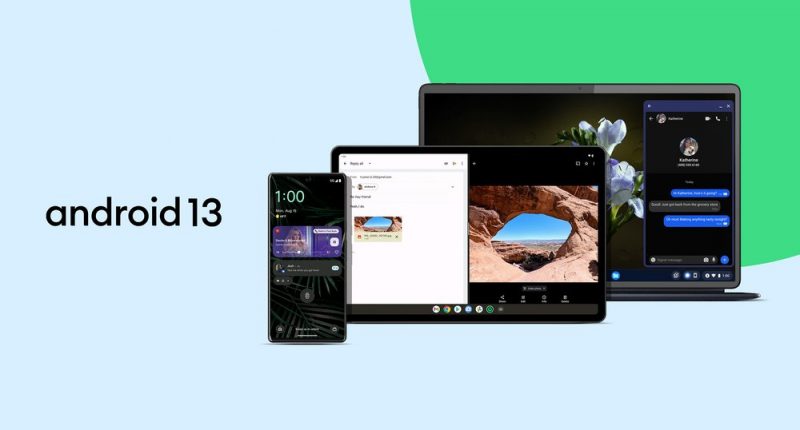Android 13 is here, and it is set to make its appearance in Google’s Pixel smartphones. The tech giant announced that after several beta releases and developer previews, Android 13 is ready to be rolled out for the Pixel lineup, and it brings with it several improvements and features.
Before delving deeply into what Android 13 brings to the table, let us see which smartphones will be getting it. Google announced that this year’s version of Android will be coming to its Google Pixel 4 and 4 XL devices, the Pixel 4a and 4a 5G, the Pixel 5 and 5a 5G, and Pixel 6, 6 Pro, and 6a, starting today.
“We have provided the latest software update for Pixel. This month, all supported Pixel devices running Android 12 will receive the Android software update, which begins rolling out for most users today. The rollout will continue over the next few weeks depending on the carrier. Users will receive a notification once the OTA becomes available for their device. We encourage you to check your Android version and update to receive the latest software,” Google wrote on its support page.
Later this year, it will also roll out to other devices and lineups, including Samsung Galaxy, Asus, HMD (Nokia phones), iQOO, Motorola, OnePlus, Oppo, Realme, Sharp, Sony, Tecno, Vivo, and Xiaomi. Google announced the same in a blog post for developers, which added that the source code for Android 13 will also be coming to its Android Open Source Project (AOSP).
Let us now see what Android 13 comes with:
1. A new look
You may remember Material You, which lets users design and customize app icons and other interfaces. Android 13 builds on the same by letting users customize non-Google apps to match the theme and colours of their wallpaper. There are new colours and themes as well, and users can now choose from four pages of wallpaper colors and basic colors.
2. Support for multilingual users
In what is surely one of the premier features offered by this year’s version of Android, Android 13 brings with it the ability to assign different languages to different apps. This means that you can watch YouTube videos in French and scroll through your Instagram feed in Danish, for example.
3. Updated media player
The media player is getting a new look and feel, which Google says is “based on the music or podcast you’re listening to.” The updated media controls now contain a progress bar and is located between the quick settings menu and the notification panel.
4. More control over notifications
Notifications are good, but they can be unwanted at times. With Android 13, downloaded apps will now need your explicit permission to send notifications, and you can deny access if you wish.
5. Clipboard history and Media Library
If you do not want apps to access your clipboard or all of your photos and videos, then Android 13 has a solution for you. It brings with it a new option that lets users specifically select the photos and videos apps can access, as well as automatic clearing of the clipboard history (after a period) if you copy sensitive data.
6. Other features
Android 13 will let users copy content including images, text, video, and URLs from their phones and paste it onto their tablets, and vice versa. It will also make for easier multitasking with the updated taskbar on tablets, which will let you see all your apps at once and drag and drop any app in your library into split-screen mode.
The following feature will be useful for stylus users – Android tablets will now register your palm and stylus pen as separate touches.
Users can also stream their messaging apps directly to your Chromebook in order to send and receive messages from the laptop itself.
Other features include the adoption of Bluetooth Low Energy (LE) Audio, a new Bluetooth audio standard that results in lower latency than classic audio, HDR video support on third-party camera apps, an updated media output switcher, and braille displays for Talkback.
The Tech Portal is published by Blue Box Media Private Limited. Our investors have no influence over our reporting. Read our full Ownership and Funding Disclosure →






